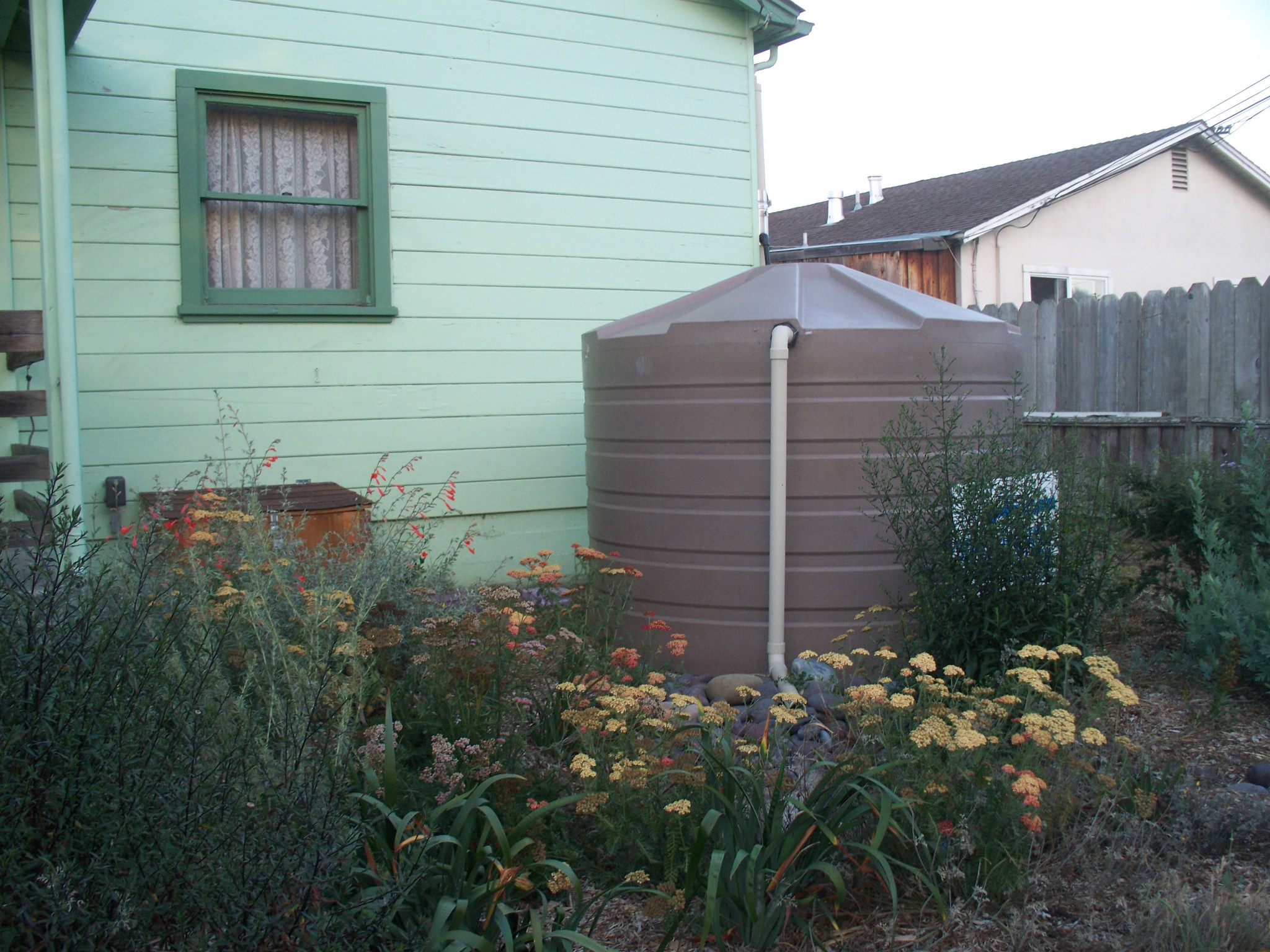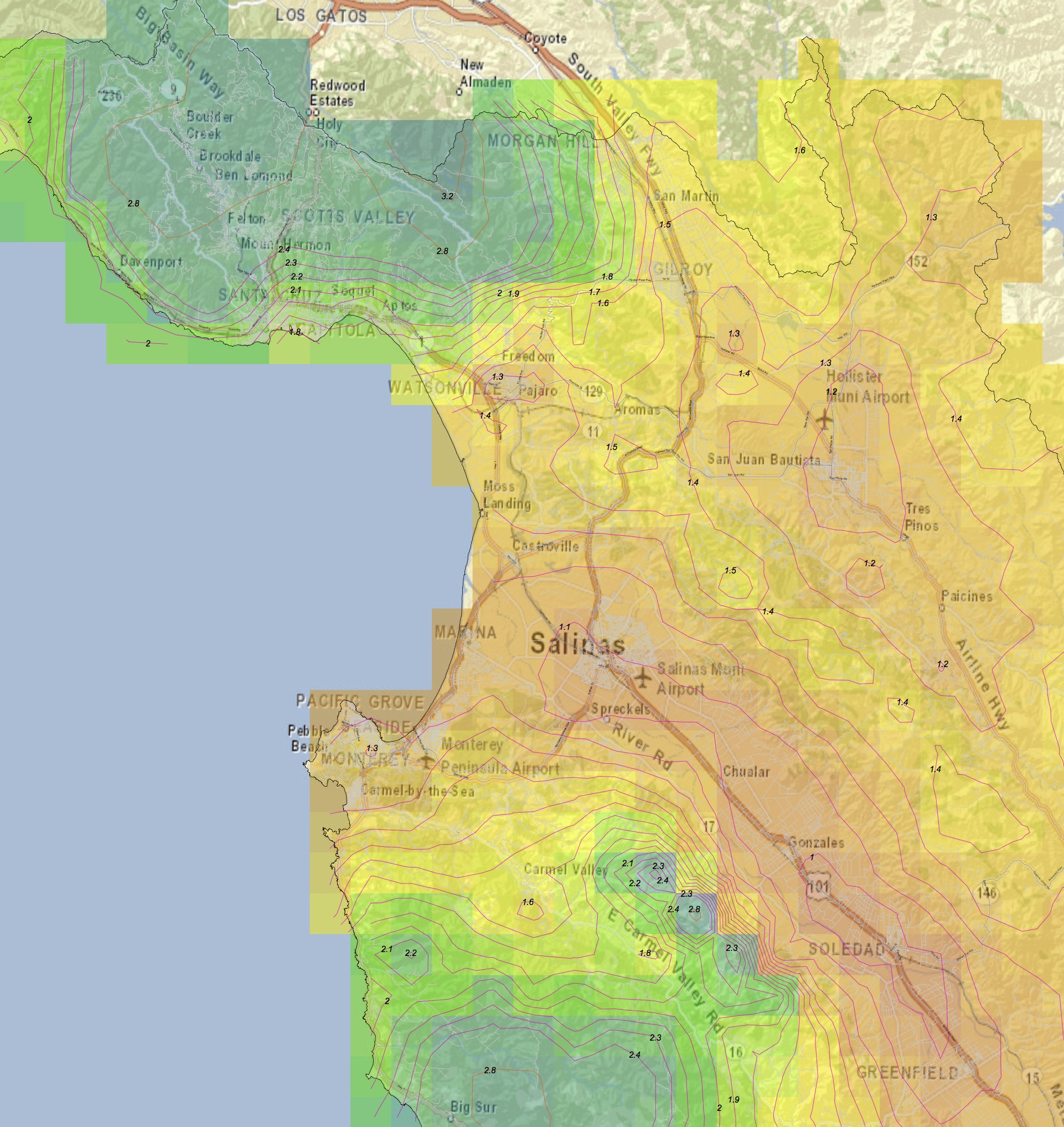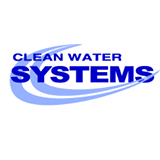- Rainwater Harvesting Overview
- Where to Buy Tanks, Filters, and Supplies
- Operations and Maintenance Manual Template
- Find an installer
 Collected rainwater from rooftops may be used for landscape irrigation, fire protection, toilet flushing, and clothes washing. A building permit is required when a cistern has more than 5,000 gallons of storage capacity, or when pumps are installed for spray irrigation and all indoor, non-potable uses. Contact your local building department for more information.
Collected rainwater from rooftops may be used for landscape irrigation, fire protection, toilet flushing, and clothes washing. A building permit is required when a cistern has more than 5,000 gallons of storage capacity, or when pumps are installed for spray irrigation and all indoor, non-potable uses. Contact your local building department for more information.
Is Rainwater Harvesting a Good Idea for My Property?
Rain barrels and cisterns are appropriate for sites with the following characteristics:
- Roof areas that drain to downspouts that have minimal leaf drop from overhanging tree branches.
- A level, firm surface to support a rain barrel(s) or cistern to prevent shifting or falling over. A full 55-gallon rain barrel will weigh over 400 lbs.
- Consider choosing a space that provides an opportunity to ‘scale’ the system, or add more storage capacity over time.
- An area on the north or east side of the house, or other area where the rain barrel(s) or cistern can be shaded by vegetation.
- A landscaped area away from the building foundation where the rain barrel or cistern overflow and supply outlet can drain by gravity.
How Much Rain Can I Harvest?
 The amount of rain you can harvest depends on your roof catchment area, the seasonal rainfall where you live, and your storage capacity. The table below describes the harvesting potential for a 1,000 square foot roof.
The amount of rain you can harvest depends on your roof catchment area, the seasonal rainfall where you live, and your storage capacity. The table below describes the harvesting potential for a 1,000 square foot roof.
| Region: | Average Storm Event | Annual Harvesting Potential |
| Santa Cruz Mtn./Scotts Valley | 1,480 gallons | 25,000-30,000 gallons |
| Santa Cruz/Capitola/Aptos | 1,125 gallons | 17,000-19,000 gallons |
| Watsonville/Carmel Valley | 830 gallons | 10,000-12,000 gallons |
| Monterey/Carmel/Salinas | 710 gallons | 9,000-13,000 gallons |
Estimating your rainwater harvesting potential in an average storm
1. Click on the map to find out how many inches of rain fall on your roof in a typical 24-hour storm.
2. Measure the area of your roof surface
3. Plug these numbers into this formula to determine the minimum size cistern you should purchase:
| ____"(rainfall in average storm) | x | ___square feet(area of roof surface) | x | 0.623(conversion factor) | x | 0.9(safety factor) | = | gallons of rainwater harvested in an average storm |
Components of a Rainwater Harvesting System
Rainwater harvesting systems can range in size and complexity. All systems have basics components, which include a catchment surface, conveyance system, storage, filtration, and overflow.
Catchment Area
The catchment area is the first point of contact for rainfall. Although it is possible to harvest runoff from parking lots, patios, and walkways, these catchment surfaces have greater levels of debris and contaminants and require more complicated filtration and treatment systems. The best catchment area is a clean roof surface.
Roof Materials
 The material of the roof is not as important as contaminants that may be on the roof. For landscape irrigation and indoor, non-potable uses, the common asphalt shingle will work fine. If you are constructing a new roof, we recommend a metal roof because they easily shed contaminants. In all cases, it’s important to avoid wooden shingles or metal flashing that contain lead or arsenic. Roofs with cement, clay, or metal surfaces are ideal for harvesting water for a wide variety of uses.
The material of the roof is not as important as contaminants that may be on the roof. For landscape irrigation and indoor, non-potable uses, the common asphalt shingle will work fine. If you are constructing a new roof, we recommend a metal roof because they easily shed contaminants. In all cases, it’s important to avoid wooden shingles or metal flashing that contain lead or arsenic. Roofs with cement, clay, or metal surfaces are ideal for harvesting water for a wide variety of uses.
Gutters and Downspouts
Properly sized and maintained gutters and downspouts are essential to a rainwater harvesting system.
- When piping water from a downspout to a cistern, use the same size pipe as your downspout. Do not reduce the size!
- Strategically locate any new downspouts in an area where the rain barrel or cistern will be most useful.
- Install a fine mesh gutter guard on gutters to keep leaves and other debris from entering and clogging the gutters. This will reduce the need for cleaning gutters and the rain barrel or cistern.
- As needed, consult a professional roofer to aid in gutter and downspout installation.
Foundation
Before installing a rain barrel or cistern, prepare the site so that the system will function safely.
 Find or create a level location near the downspout on which to place the rain barrel or cistern.
Find or create a level location near the downspout on which to place the rain barrel or cistern.- Cisterns can be installed on grade on compacted earth, concrete or stone paver foundation. An engineered foundation is required for cisterns with 5,000 or more gallons of capacity.
- Install pea gravel around your rain barrel or cistern so that rainwater will not erode the edges of the foundation.
- Maintain clear access to the rain barrel outlets and cleaning access points.
Required Pre-Tank Debris Screens
A debris excluder or screen with a maximum 1/16” mesh is required to keep large debris and mosquitoes from entering the barrel or cistern. Many cisterns and barrels are manufactured with debris screens pre-installed on inlets.
Optional Roof Washer or First Flush Device
Leaves, twigs, sediment, and animal waste are common in runoff, especially at the beginning of a storm (“first flush”). This debris can result in clogging and encourage bacterial growth. A first flush diverter helps remove debris and contaminants by directing the first few gallons of runoff from the roof to landscaping, away from the rain barrel or cistern.
Required Post-Tank Sediment Filtration
Rainwater harvesting systems used for drip irrigation and indoor, non-potable uses such as toilet flushing and clothes washing are required to have a 100 micron sediment filter installed on rainwater outlet piping.
Disinfection
Disinfection options include ultraviolet light, ozone, and chlorine. Disinfection is required for potable uses of rainwater such as showering, cooking and drinking water.
Rainwater Overflow
- The overflow pipe should be the same size as the rainwater inlet pipe.
- Overflow pipes must be screened with maximum 1/16” mesh material to prevent animals and mosquitos from entering.
- When designing the overflow path, remember that in heavy storms rain barrels and cisterns will overflow. A 1,000-sq.-ft. roof will produce about 600 gallons of runoff during a storm that produces a depth of 1 inch of rain.
- Allow overflow to drain to a vegetated area of your landscape. Rain gardens, dry creek beds and swales allow you to integrate overflow into a beautiful landscape feature that creates habitat and infiltrates water into your landscape so that you won’t have to irrigate as much.
- Ensure that areas receiving overflow do not have standing water for more than 48-hours. Always direct overflow away from your home’s foundation.
Design Considerations for Rain Barrels and Small Cisterns
When installing rain barrels and cisterns, consider the following criteria unless otherwise instructed by the municipality.
- If irrigating edible landscapes, consider pipes that meet FDA food grade standards.
- There shall be no direct connection of any rain barrel or cistern and/or rainwater collection piping to any potable water pipe system. Rainwater systems shall be completely separate from potable water piping systems.
- Place the bottom of a rain barrel at a higher elevation than the landscape, to use gravity flow.
- The low water pressure from a small rain barrel will not operate in-ground sprinkler or low-volume devices. Consider using laser cut drip tubing. .
- All rain barrels and cisterns should have a screen to ensure mosquitoes cannot enter.
- If the water is not needed for irrigation during the rainy season, consider releasing the water to a vegetated area between storms, so the barrels will be empty to catch rain from the next storm. This will help protect your watershed by reducing the quantity and speed of water entering local creeks during storms. Install a spigot and laser cut drip tubing to allow the rain barrel or cistern to slowly drain between storms. You can store the water captured towards the end of the rainy season to irrigate your garden in the dry season.
Local Suppliers
(831) 423-0223, 235 River St., Santa Cruz

(831) 464-6777,5550 Soquel Ave., Santa Cruz
(831) 656-9530,225 Dela Vina Ave., Monterey
(408) 463-0800, 9860 Monterey Rd., Morgan Hill
(831) 438-6450, 5010 Scotts Valley Dr., Scotts Valley
(831) 728-0446, 131 Walker St., Watsonville
(Filtration and Ultraviolet Equipment only) Showroom at: 2806-A Soquel Ave, Santa Cruz
Online Suppliers
Maintenance for Rain Barrels
After installing your rain barrel, follow these tips for long-term safety and functionality.
- Regularly check the gutters and gutter guards to make sure debris is not entering the rainwater harvesting system.
- Inspect the screens on the rain barrel prior to the wet season to make sure debris is not collecting on the surface and that there are not holes allowing mosquitoes to enter the rain barrel. Inspect screens more frequently if there are trees that drop debris on the roof.
- Clean the inside of the rain barrel once a year (preferably at the end of the dry season when the rain barrel has been fully drained) to prevent buildup of debris. If debris cannot be removed by rinsing, use vinegar or another non-toxic cleaner. Use a large scrub brush on a long stick, and avoid actually entering the rain barrel. Drain washwater to landscaping.
Operation and Maintenance of Cisterns
Download a complete Rainwater Harvesting Template O & M Manual for your rainwater harvesting system. You can customize the template by filling in all areas of blue highlight.
Rainwater installers are accredited through the American Rainwater Harvesting Association (ARCSA)
| Garden Solutions Landscaping | Monterey | 831 236-2378 |
| Love's Gardens | Santa Cruz | 831 471-9100 |
| Kettle Construction Inc. | Carmel | 831 624-8275 |
| Earthcraft Landscape Design | Soquel | 831 475-9355 |
| Aqua Soleil | Carmel | 831 915-1284 |
| Handy Dan Construction | Monterey | 831 643-9911 |
| WaterMarkH2O | Santa Cruz | 408-690-7581 |
ARCSA Accredited Professionals are listed on the Hire a Green Gardener page
Local & Online Rainwater Harvesting Resources
Learn more about local resources for rainwater harvesting supplies and installation at






